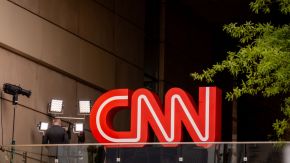
In a landmark decision, the United States Food and Drug Administration (FDA) has officially banned the use of Red Dye No. 3 in food, beverages, and ingested drugs.
The ruling, announced Wednesday, follows decades of concerns linking the synthetic dye to cancer in animals. Manufacturers now have until January 15, 2027, for food products and January 18, 2028, for ingested drugs to phase out the additive.
Petroleum-Based Red Dye No. 3 Faces FDA Ban After Decades of Use
Red Dye No. 3, also known as erythrosine, is a petroleum-based synthetic colorant that has been widely used to give foods a bright cherry-red appearance.
The decision to ban the dye is the result of a 2022 petition led by advocacy groups like the Center for Science in the Public Interest and the Environmental Working Group.
According to CNN, these groups pointed to studies showing the dye's carcinogenic effects in animal tests, prompting a re-evaluation of its safety under the Delaney Clause. This federal law prohibits the approval of food additives found to cause cancer in humans or animals.
While the FDA noted that the mechanism causing cancer in animals does not apply to humans, the agency concluded that the law necessitated the ban. This move aligns the U.S. with countries such as the European Union, which prohibited the dye in most foods in 1994.
Red Dye No. 3 has been a common ingredient in candies, baked goods, fruit-flavored beverages, and some medications. While brands like Just Born (makers of PEEPS) and Ferrara have already phased out the additive, other companies must now adjust their formulations to comply with the new regulations.
The dye has also been associated with potential behavioral issues in children, such as decreased attention and hyperactivity, according to studies from California's Office of Environmental Health Hazard Assessment.
After Red Dye No. 3 Ban, Experts Warn Against Shifting to Other Artificial Colorants
Public health experts and advocacy groups are hailing the ban as a long-overdue victory. Ken Cook, president of the Environmental Working Group, called the decision a "monumental victory for consumer health and safety," Newsweek said.
Similarly, Dr. Jennifer Pomeranz of NYU's School of Global Public Health highlighted the "regulatory paradox" that allowed the dye to remain in food despite its earlier ban in cosmetics.
While Red Dye No. 3 is being eliminated, some manufacturers have shifted to other artificial colorants, such as Red Dye No. 40.
However, this dye has also faced scrutiny, with concerns over its potential links to behavioral issues and immune system effects. Experts recommend avoiding highly processed foods and checking labels for dyes, often listed as FD&C numbers, to minimize exposure.















